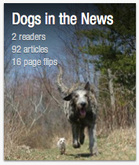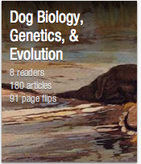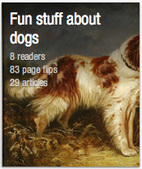ABSTRACT
Spinocerebellar ataxia (SCA) in the Parson Russell Terrier (PRT) dog breed is a disease of progressive incoordination of gait and loss of balance. Clinical signs usually become notable between 6 and 12 months of age with affected dogs presenting with symmetric spinocerebellar ataxia particularly evident in the pelvic limbs. The degree of truncal ataxia, pelvic limb hypermetria and impaired balance is progressive, particularly during the initial months of disease. A certain degree of stabilisation as well as intermittent worsening may occur. At the later stages of the disease ambulation often becomes difficult, with owners often electing to euthanise affected dogs on welfare grounds. Using a GWAS approach and target-enriched massively-parallel sequencing, a strongly associated non-synonymous SNP in the CAPN1gene, encoding the calcium dependent cysteine protease calpain1 (mu-calpain), was identified. The SNP is a missense mutation causing a cysteine to tyrosine substitution at residue 115 of the CAPN1 protein. Cysteine 115 is a highly conserved residue and forms a key part of a catalytic triad of amino acids that are crucial to the enzymatic activity of cysteine proteases. The CAPN1 gene shows high levels of expression in the brain and nervous system and roles for the protein in both neuronal necrosis and maintenance have been suggested. Given the functional implications and high level of conservation observed across species, the CAPN1variant represents a provocative candidate for the cause of SCA in the PRT and a novel potential cause of ataxia in humans.
Forman OP, De Risio L, Mellersh CS (2013) Missense Mutation in CAPN1 Is Associated with Spinocerebellar Ataxia in the Parson Russell Terrier Dog Breed. PLoS ONE 8(5): e64627. doi:10.1371/journal.pone.0064627
Spinocerebellar ataxia (SCA) in the Parson Russell Terrier (PRT) dog breed is a disease of progressive incoordination of gait and loss of balance. Clinical signs usually become notable between 6 and 12 months of age with affected dogs presenting with symmetric spinocerebellar ataxia particularly evident in the pelvic limbs. The degree of truncal ataxia, pelvic limb hypermetria and impaired balance is progressive, particularly during the initial months of disease. A certain degree of stabilisation as well as intermittent worsening may occur. At the later stages of the disease ambulation often becomes difficult, with owners often electing to euthanise affected dogs on welfare grounds. Using a GWAS approach and target-enriched massively-parallel sequencing, a strongly associated non-synonymous SNP in the CAPN1gene, encoding the calcium dependent cysteine protease calpain1 (mu-calpain), was identified. The SNP is a missense mutation causing a cysteine to tyrosine substitution at residue 115 of the CAPN1 protein. Cysteine 115 is a highly conserved residue and forms a key part of a catalytic triad of amino acids that are crucial to the enzymatic activity of cysteine proteases. The CAPN1 gene shows high levels of expression in the brain and nervous system and roles for the protein in both neuronal necrosis and maintenance have been suggested. Given the functional implications and high level of conservation observed across species, the CAPN1variant represents a provocative candidate for the cause of SCA in the PRT and a novel potential cause of ataxia in humans.
 RSS Feed
RSS Feed





